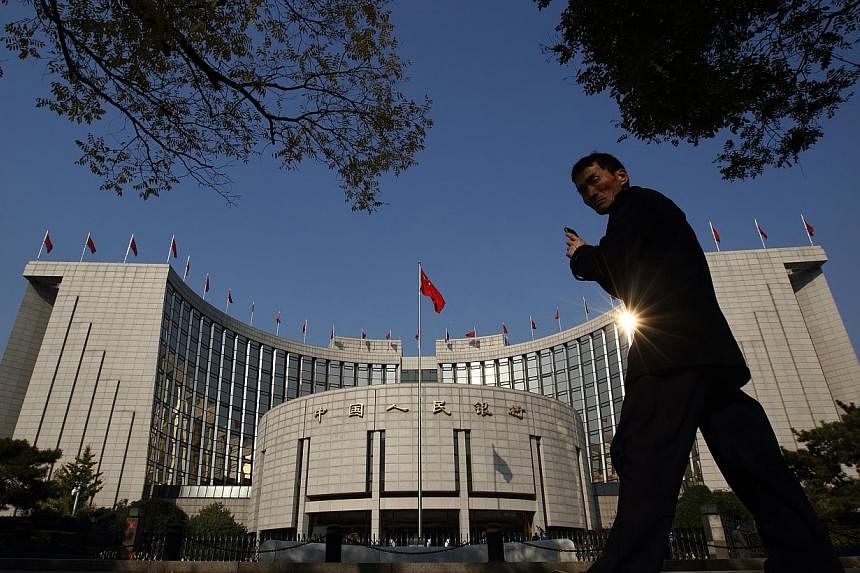BEIJING (Bloomberg) - China cut the amount of cash banks must set aside as reserves in a bid to boost the supply of loans, as capital outflows and weakness at the nation's factories suggest a slowdown in the world's second-largest economy is deepening.
The reserve ratio will fall 50 basis points on Thursday, the People's Bank of China said on its website Wednesday. The level will drop to 19.5 per cent, based on previous statements, while some lenders to rural and small business get bigger reductions.
The PBOC joins more than a dozen global counterparts in easing monetary policy this year as tumbling commodity prices provide scope to support growth. While Premier Li Keqiang told global business leaders last month not to worry about weakening Chinese growth, the latest step signals policy makers are concerned the slowdown has yet to reach bottom.
"You have lot of the world easing monetary policy in a context in which inflation is going down, partly because of relatively slow growth and partly because of falling oil prices," said Edwin Truman, a former Federal Reserve and U.S. Treasury official who's now a senior fellow at the Peterson Institute for International Economics in Washington.
China's latest move is "part of that general pattern."
Futures on the FTSE China A50 Index traded in Singapore surged 5.1 per cent as of 12:33 p.m. in New York, while contracts on Hong Kong's Hang Seng Index climbed 1.7 per cent.
The required reserve ratio, or RRR, reduction is the first across-the-board cut since May 2012. It will inject as much as 600 billion yuan into the banking system, Australia & New Zealand Banking Group Ltd. economists estimate.
"We expect at least four more reserve ratio cuts in 2015, in view of the prospect for further deceleration in economic fundamentals," said Shen Jianguang, chief Asia economist at Mizuho Securities Asia Ltd. in Hong Kong. He said the rising risk of deflation, weak factory and services readings, and an effective clampdown on stock-market speculation had helped trigger the cut.
Mired by a property slump and overcapacity, China saw the biggest outflow of capital since at least 1998 last quarter.
The latest reserve-ratio cut "is a clear indication that China is on the offensive," said Peter Rosenstreich, head of market strategy at Swissquote Bank SA in Gland, Switzerland. "2015 will see a much more aggressive PBOC and government which should keep the yuan supported. This proactive strategy should also be positive for regional Asia currencies and commodity prices."
China's leaders gather next month at an annual meeting, where they are anticipated to unveil a growth target of around 7 per cent, down from "about 7.5 per cent" last year.
The RRR move suggests a shift toward pro-growth policies that may fuel even more debt. An unprecedented lending spree in China from 2009 to 2013 led to a surge in credit on a scale that's triggered banking crises in other economies, according to the International Monetary Fund.
The PBOC cut benchmark interest rates in November for the first time since July 2012, joining the European Central Bank and Bank of Japan in deploying fresh stimulus. While that lowered the cost of credit, a reserve-ratio cut boosts liquidity by allowing banks to extend more credit.

